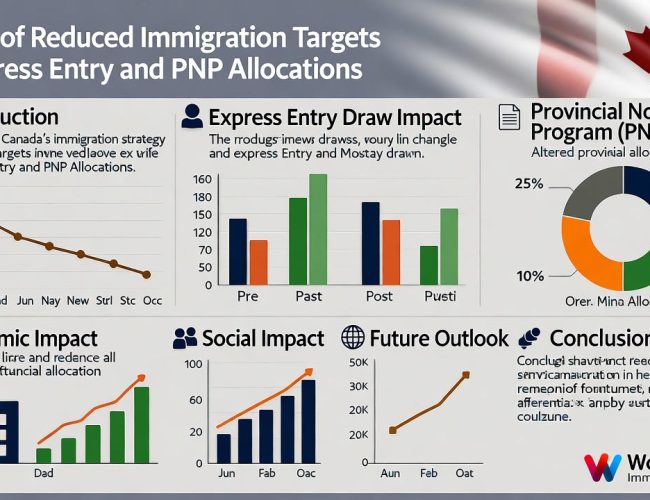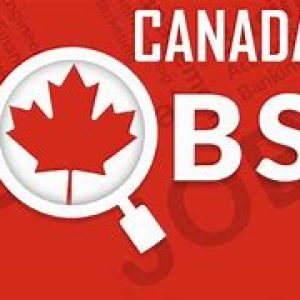Canada’s immigration system is undergoing a deliberate recalibration, with the 2025-2027 Immigration Levels Plan marking the first significant reduction in permanent resident (PR) targets in over a decade. Overall PR admissions dropped from 485,000 in 2024 to 395,000 in 2025 a 19% cut before stabilizing at 380,000 in 2026. This shift, driven by pressures on housing, healthcare, and infrastructure, has directly influenced the frequency, size, and focus of Express Entry draws while prompting targeted adjustments to Provincial Nominee Program (PNP) allocations. As we enter late 2025, with the 2026-2028 plan freshly announced on November 4, 2025 (setting PR at 380,000 for 2026), these changes signal a more strategic, quality-over-quantity approach. At Worldbridge, we’re helping clients adapt—whether through category-based Express Entry strategies or province-specific PNP applications. Here’s a breakdown of the impacts for 2025-2026.
Express Entry Draws: From High-Volume to Targeted Precision
Express Entry, Canada’s flagship economic immigration system, has seen the most visible shifts due to the reduced targets. With fewer overall PR spots, Immigration, Refugees and Citizenship Canada (IRCC) has pivoted from broad, biweekly all-program draws to smaller, category-based selections that prioritize in-demand skills, in-Canada experience, and Francophone candidates. This ensures admissions align with labor market needs while managing backlogs.
- Fewer and Smaller Draws: In 2025, IRCC issued around 33,404 Invitations to Apply (ITAs) by mid-year, far below 2024’s pace, with no all-program draws at all—a first in Express Entry’s history. Total ITAs for 2025 are projected to hover near 2024 levels (about 110,000-120,000), but with irregular timing to avoid overshooting quotas. For 2026, the economic stream target of 239,800 (including Express Entry) suggests a modest rebound, potentially restoring some volume but maintaining a targeted focus.
- Higher CRS Cut-Offs and Category Emphasis: Comprehensive Ranking System (CRS) scores have trended upward, often in the high 400s to 500s for general categories like Canadian Experience Class (CEC), as seen in the October 29, 2025, CEC draw (1,000 ITAs at CRS 534). Category-based draws dominate: French-language rounds accounted for 37% of 2025 ITAs despite only three sessions, with cut-offs as low as 379. Healthcare, trades, and STEM categories saw draws with thresholds around 479-510, while no STEM or agriculture draws occurred in 2025—signaling a pause until 2026 alignments. The removal of job offer points in 2025 further intensified competition, pushing candidates toward provincial nominations or language boosts.
- In-Canada Priority: Draws increasingly favor CEC and in-Canada transitions (e.g., students/workers), with 85% of applications now processing in six months due to lighter volumes. This benefits temporary residents but challenges out-of-country applicants, who now need stronger profiles.
Overall, the reductions have made Express Entry more predictable but selective—ideal for skilled candidates in priority sectors, but a wake-up call for others to upskill or seek PNP ties.
PNP Allocations: Initial Cuts, Mid-Year Boosts, and Regional Rebalancing
The PNP, which allows provinces to nominate candidates for local needs, bore the brunt of the 2025 cuts, with federal allocations halved from 110,000 in 2024 to 55,000. This forced provinces to pause streams, exhaust quotas early (e.g., Nova Scotia halted some processing by July 2025), and prioritize in-demand occupations like healthcare and trades. However, mid-2025 adjustments and federal top-ups restored capacity for labor-short regions.
- 2025 Cuts and Responses: Provinces like British Columbia (down to 4,000), Nova Scotia (halved to 1,785), and Saskatchewan (50% reduction) faced immediate strain, leading to waitlists and suspended draws. By October 2025, IRCC boosted allocations for four provinces: Alberta (+1,528 to 6,403), Saskatchewan (+1,136), Newfoundland and Labrador, and New Brunswick—recovering much of 2024 levels amid lobbying for sectors like energy and agriculture. Manitoba and Nova Scotia also received “significant” increases in October.
- 2026 Outlook: The new plan maintains PNP at ~55,000 but introduces flexibility, with economic streams (including PNP) rising to 239,800 overall. Expect continued regional boosts (e.g., Atlantic provinces via AIP) and a 75% in-Canada experience requirement for nominees, favoring students and workers. Provinces like Alberta and Saskatchewan are rebounding strongly, with draws resuming in priority sectors.
These changes have made PNPs more competitive but regionally tailored—provinces now exhaust quotas faster, emphasizing retention incentives like housing support.
What This Means for Applicants in 2025-2026
The reductions promote sustainability but heighten competition: Express Entry favors targeted profiles (e.g., add French for low CRS access), while PNPs offer lifelines for regional ties. With 2026’s steady targets, now’s the time to align your application perhaps via a PNP-linked Express Entry profile.
Let Worldbridge Immigration Services be your guide to a successful future in Canada
Contact us:
Website: www.theworldbridge.ca
Email: info@theworldbridge.ca
Phone/WhatsApp: +1-416-727-7766
Social media: @worldbridgeHQ

















